"Portrait Of A Young Nobleman In Armour 1690’s; Studio Of Francois De Troy (1645-1730)"
This exquisite work formed part of the collection of the Clan Macpherson’s at their historic seat, Cluny Castle, at Laggan Scotland. The painting was sold as part of a large sale of “Furnishings and Plenishings of the Castle…” and “…historic relics, pictures and books” from the Estate of Albert Macpherson of Cluny Macpherson, 17th chief (1854-1932), the last of the direct line of the Macphersons of Cluny, in a sale held by Wylie & Lochhead in 1943. This portrait along with important heirlooms and historical Clan Chattan relics were sold, thus dispersing a collection that was compiled over many centuries. Macpherson’s from around the world rallied and purchased items in the sale - our painting was acquired by Thomas Macpherson, 1st Baron Macpherson of Drumochter (1888-1965) and retained until 1959The young sitter in this sumptuous large-scale portrait is featured wearing a fashionable long wig and donning a large taffeta bow, which was fashionable in the late seventeenth century, above an ingeniously embellished ceremonial armour. The prestigious character of this portrait is accentuated by the gold fringed curtain, which opens out and directs the viewer to a town with castellated architecture, perhaps the sitter’s possessions. The young nobleman, displayed as a brave and chivalrous character, was likely to have been of some distinction, and certainly of wealth, for such fine and ornate armour would have been very expensive indeed. By the time this portrait was painted, apart from helmets and breastplates, full suit armour became increasingly rare on the battlefield, and thus its portrayal in portraiture was largely symbolic of the sitter’s wealth, status, and rank as well as a claim of succession to a chivalrous tradition. Common in portraiture at the time, sitters were often displayed in outdoor settings with military encampments or amongst a raging battlefield. By tradition the sitter was thought to be Prince Charles Edward Stuart or “Bonnie Prince Charlie”, however our portrait was painted much earlier, and the distinct idiosyncrasies and facial physiognomy of our sitter differ from that of Bonnie Prince Charlie and his iconography.
This is a particularly fine example; the degree of realism in the face and attire is outstanding and there is a very pleasing treatment of the architecture, almost impressionistic, with blocks of varying shades of blue rendered in a painterly style. Perhaps the greatest virtuosity is found in the brilliantly detailed suit of armour. The artist went to great lengths to extensively render the highlights on the metal with touches of white and gold. The highly polished steel surface is adorned with etched and gilt ornamentation. The features of the sitter’s face have been captured with great sensitivity, his confident gaze perhaps reflecting the near invincibility afforded by this steel suit. Far from the noisy chaos of the battleground, the image conveys a sense of calm and refinement, power and order.
The Macpherson clan took their name in the 15th century. They are part of a confederation of smaller clans, which came together in the middle-ages for mutual protection. Together, they formed a super clan called Clan Chattan. Although the chief of the Mackintosh clan has most frequently been the leader of Clan Chattan, there has been a long rivalry with the chiefs of the Macpherson clan for that position. Together, as the principal chiefs of Clan Chattan, they were involved in a bloody feud with Clan Cameron that lasted 350 years.
The exact date when Macphersons first lived at Cluny Castle is not recorded but in 1591 “Andrew Makfersone in Cluny” (that is, a tenant living at Cluny), along with the rest of Clan Farsen, gave his bond to the Earl of Huntly. In 1609 he obtained a heritable right of Cluny, becoming “Andrew Macpherson of Cluny”. Andrew’s son, Ewan, died before his father, and neither of his sons had sons, so in 1722 the house and lands passed to Lachlan Macpherson of Nuid. Lachlan’s eldest son, “Ewan of the ‘45”, built at new house in 1723.
During the Jacobite rebellion of 1745, clan chef Ewan Macpherson of Cluny (known simply as Cluny Macpherson), raised 400 men in support of Charles Edward Stuart’s doomed attempt to restore the Stuart dynasty to the British throne. After the battle of Culloden, the chief went into hiding, evading capture for nine years, and Cluny Castle and all the houses that belonged to it were burned and the estate sequestrated. Cluny finally escaped to France and in 1784 the estate was returned to the family, but with such an enormous debt that Duncan, Ewan’s son, was unable to start rebuilding the house until 1802. The direct line of the MacPhersons of Cluny died out on the death in 1943 of Albert Macpherson of Cluny Macpherson, 17th chief (1854-1932) – at this time our portrait was sold.
Held in a beautiful antique gilded frame.
François de Troy (c.1645–1730) was a French painter and engraver and Director of the Académie Royale de peinture et de sculpture. He was born in Toulouse and was taught the rudiments of painting by his artist father, Antoine Troy (c.1608-1684). By 1662 he was in Paris studying the trade under Claude Lefèbvre (1633–1675) and Nicolas-Pierre Loir (1624–1679] and in 1674 he was received into the Academy as a history painter. One year later he began to concentrate on portrait painting as he realised there was a market in this area. In 1680 he was commissioned to paint the wife of Louis of France, Dauphin of France, Maria Anna Victoria of Bavaria and thus began a long career painting members of the French court and the upper classes for almost fifty years.
In the 1690s, Troy became the principal painter to the court of King James II in exile at Saint-Germain-en-Layea and received many commissions to promote the Jacobite cause. He employed the services of his best student, Alexis Simon Belle, to meet this demand – many characteristics of Belle’s work are visible in our painting, notably the pattern, the gesturing hand, the landscape, and the rendering of textures and materials. The armour worn by the sitter in our painting is particularly remarkable from this point of view.
In 1698, Troy was appointed a Professor of the Académie Royale, and its Director in 1708. He died in Paris at the age of eighty-five.
Provenance:
Albert Macpherson of Cluny Macpherson, 17th chief (1854-1932), his sale Wylie & Lochhead, 58 Sauchiehall St, Glasgow, 3 May 1943;
Sold Christies London 24 July 1959, Thomas Macpherson, 1st Baron Macpherson of Drumochter (1888-1965), Lot 72 “PORTRAIT OF A YOUNG NOBLEMAN, formerly said to be Prince Charles Edward, three-quarter length, standing in armour with a blue sash and elaborate pink cravat” 50in. by 37in.
Measurements: Height 161cm, Width 129cm, Depth 12cm framed (Height 63.5”, Width 50.75”, Depth 4.75” framed)




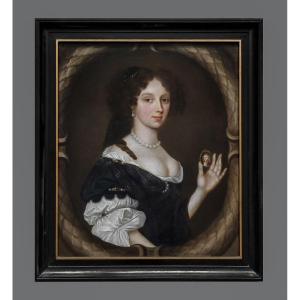

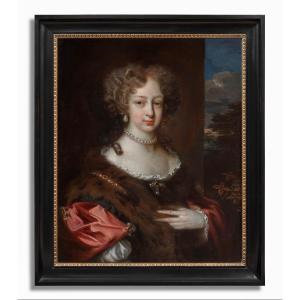


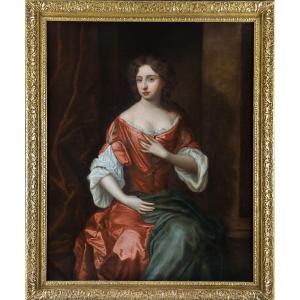
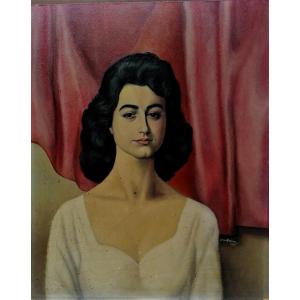
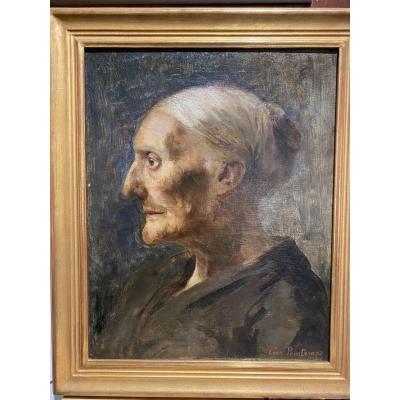
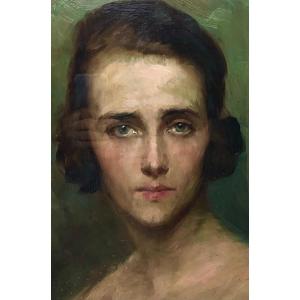
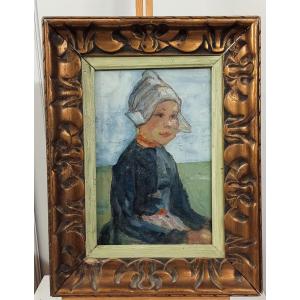

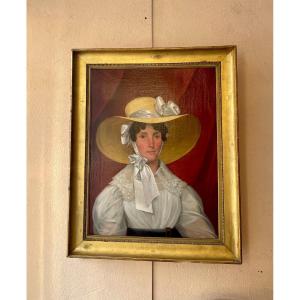




 Le Magazine
Le Magazine Rivista Artiquariato
Rivista Artiquariato TRÉSORS magazine
TRÉSORS magazine








